Opinion & Analysis
The problems with Rory and traditional golf statistics
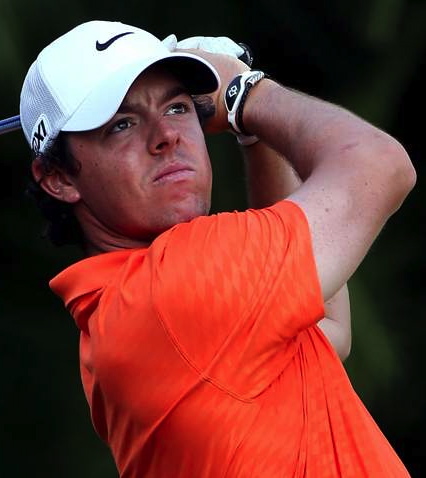
Mark Twain was once said “There are lies, damned lies and statistics.”
This is often a popular adage from critics of an advanced metrics point of view. Normally this tends to occur with people who utilize anecdotal evidence to formulate their opinions and when the numbers tell them something they don’t like. The reality is that statistics do not lie, but incomplete and flawed statistics can lead to faulty analysis and conclusions derived from that analysis.
A prime example of this right now is the “fall” of Rory McIlroy’s play. People are stating that his dip in his performance is due to switching equipment. Johnny Miller thinks it is a giant mistake for Rory to switch his irons, as he did the same thing in his prime and he could never quite adjust to the change. Let’s take a look at his “traditional” golf metrics:
As we can see, Rory is better this year in fairway percentage and greens in regulation. He has regressed in scrambling percentage. Most people, including statisticians, would agree that greens in regulation has a larger impact on Tour success than scramble percentage. So, why has Rory performed worse this year despite hitting more fairways and greens in regulation?
Let’s take a look at his putting. While putts gained is not a “traditional” metric, it’s becoming more accepted as a traditional metric. Is the putting the problem?
The table shows that Rory is actually putting better this year than he did last year. It’s traditional metrics like GIR percentage, total driving and scramble percentage that tend to confuse golfers and consequently brush off metrics as “lies, damned lies and statistics.”
However, all it takes is to dig a little deeper and to use more detailed statistics and we start to see a better depiction of Rory’s play in 2012. Here’s a look at my main ballstriking metrics which include:
Driving effectiveness: A proprietary formula that uses the metrics of driving distance, fairway percentage, percentage of fairway bunkers hit, distance from the edge of the fairway and “missed fairways – other” to determine a player’s effectiveness off the tee.
Birdie zone: Proximity to the cup on approach shots from 75-125 yards.
Safe zone: Proximity to the cup on approach shots from 125-175 yards.
Danger zone: Proximity to the cup on approach shots from 175-225 yards.
These numbers suggest that the new equipment is not an issue or at least the new irons have worked out better for him this year.
While he is less effective off the tee, considering this is based out of 190 players on Tour he is still a driving the ball great.
So, where is the issue?
From what I have gathered so far, I would look at the two largest statistical regressions: scrambling and driving.
First, let’s look at my metric called “short game play.” This is the average proximity to the cup on all shots that are no more than 20 yards away from the edge of the green. We have seen that Rory has improved his putts gained, so let’s see if his actual skills around the green have regressed.
So yes, there has been a regression. But we simply cannot stop there because it is not a big enough regression to explain Rory’s dip in play from last year as we the numbers tell us that short game play does not have that large of an influence on a player’s score. Let’s drill down further and look at the attempts per round on shots from around the green.
And here is where we start to see some of the issue with Rory’s play. While he has regressed a bit in his ability to get the ball closer to the cup on shots around the green, one major issue is that he is leaving himself with more shots from a longer distance. With that said, that still does not quite tell the entire story. So, let’s drill down and examine his driving a bit further.
We know that he’s hitting it about the same distance off the tee. We also know that he is hitting more fairways this year. Since he is less effective off the tee this year, that leaves it to examining what I call the precision metrics of driving as we have already examined the power (distance) and accuracy (fairway percentage) metrics of driving.
And here is where we are starting to see more of the entire story into the regression of Rory’s play from 2012. Essentially, Rory is hitting his irons better and putting better. He’s hitting the ball virtually the same distance off the tee and is actually more accurate (fairway percentage), but he is much more imprecise off the tee this year and it is affecting his play despite the fact that he’s been better at the popular “traditional metric” greens in regulation percentage.
This is why I generally avoid examining greens in regulation percentage, particularly on the Tour level. For starters, it is too vague of a metric to really learn from. I have seen plenty of high GIR percentage players who struggle off the tee, but hit it great with their irons (Tiger). Conversely, I have seen high GIR percentage players who hit it great off the tee but have their struggles with the irons (Bubba Watson). It simply fails to tell the golfer how they get the ball on the green in regulation, either from a good drive or a good iron shot or both.
Secondly, across the board the numbers show that proximity to the cup has a higher correlation to success on Tour than GIR percentage. In fact, if you go to a Tour event it is obvious that Tour players have some sense of this as they are more apt to fire at a flag, even with trouble nearby, rather than to aim for the middle of the green. Simply put, the average Tour player makes one birdie putt outside 25 feet per 98 holes of golf!
Thus, Tour players instinctively understand that in order to make birdies on the course they need to get the birdie putt close to the hole. And most of the time the Tour players would take a 25-foot chip shot from off the green than the 50-foot putt that is on the green. And if you’re a golfer, you should probably do the same as well or start improving your short game enough so you start to want to have those much shorter chip shots over those longer putts.
What greens in regulation percentage does not tell us about Rory’s game is that he is hitting a higher percentage of greens in spite of being more imprecise with the driver. And what is happening is that when he misses a green it is coming more from a bad tee shot than a bad iron shot. Not only does that possibly mean that he is finding hazards and out of bounds more often (missed fairway –- other), but his bad drives are much worse this year and it leaves him with much more difficult shots to save par from.
So for now, I would say that the new irons and putter are actually helping Rory. But he now has to figure out how to get back his precision off the tee with the new driver. If he can, he’ll be even tougher to beat.
Opinion & Analysis
The 2 primary challenges golf equipment companies face

As the editor-in-chief of this website and an observer of the GolfWRX forums and other online golf equipment discourse for over a decade, I’m pretty well attuned to the grunts and grumbles of a significant portion of the golf equipment purchasing spectrum. And before you accuse me of lording above all in some digital ivory tower, I’d like to offer that I worked at golf courses (public and private) for years prior to picking up my pen, so I’m well-versed in the non-degenerate golf equipment consumers out there. I touched (green)grass (retail)!
Complaints about the ills of and related to the OEMs usually follow some version of: Product cycles are too short for real innovation, tour equipment isn’t the same as retail (which is largely not true, by the way), too much is invested in marketing and not enough in R&D, top staffer X hasn’t even put the new driver in play, so it’s obviously not superior to the previous generation, prices are too high, and on and on.
Without digging into the merits of any of these claims, which I believe are mostly red herrings, I’d like to bring into view of our rangefinder what I believe to be the two primary difficulties golf equipment companies face.
One: As Terry Koehler, back when he was the CEO of Ben Hogan, told me at the time of the Ft Worth irons launch, if you can’t regularly hit the golf ball in a coin-sized area in the middle of the face, there’s not a ton that iron technology can do for you. Now, this is less true now with respect to irons than when he said it, and is less and less true by degrees as the clubs get larger (utilities, fairways, hybrids, drivers), but there remains a great deal of golf equipment truth in that statement. Think about it — which is to say, in TL;DR fashion, get lessons from a qualified instructor who will teach you about the fundamentals of repeatable impact and how the golf swing works, not just offer band-aid fixes. If you can’t repeatably deliver the golf club to the golf ball in something resembling the manner it was designed for, how can you expect to be getting the most out of the club — put another way, the maximum value from your investment?
Similarly, game improvement equipment can only improve your game if you game it. In other words, get fit for the clubs you ought to be playing rather than filling the bag with the ones you wish you could hit or used to be able to hit. Of course, don’t do this if you don’t care about performance and just want to hit a forged blade while playing off an 18 handicap. That’s absolutely fine. There were plenty of members in clubs back in the day playing Hogan Apex or Mizuno MP-32 irons who had no business doing so from a ballstriking standpoint, but they enjoyed their look, feel, and complementary qualities to their Gatsby hats and cashmere sweaters. Do what brings you a measure of joy in this maddening game.
Now, the second issue. This is not a plea for non-conforming equipment; rather, it is a statement of fact. USGA/R&A limits on every facet of golf equipment are detrimental to golf equipment manufacturers. Sure, you know this, but do you think about it as it applies to almost every element of equipment? A 500cc driver would be inherently more forgiving than a 460cc, as one with a COR measurement in excess of 0.83. 50-inch shafts. Box grooves. And on and on.
Would fewer regulations be objectively bad for the game? Would this erode its soul? Fortunately, that’s beside the point of this exercise, which is merely to point out the facts. The fact, in this case, is that equipment restrictions and regulations are the slaughterbench of an abundance of innovation in the golf equipment space. Is this for the best? Well, now I’ve asked the question twice and might as well give a partial response, I guess my answer to that would be, “It depends on what type of golf you’re playing and who you’re playing it with.”
For my part, I don’t mind embarrassing myself with vintage blades and persimmons chasing after the quasi-spiritual elevation of a well-struck shot, but that’s just me. Plenty of folks don’t give a damn if their grooves are conforming. Plenty of folks think the folks in Liberty Corner ought to add a prison to the museum for such offences. And those are just a few of the considerations for the amateur game — which doesn’t get inside the gallery ropes of the pro game…
Different strokes in the game of golf, in my humble opinion.
Anyway, I believe equipment company engineers are genuinely trying to build better equipment year over year. The marketing departments are trying to find ways to make this equipment appeal to the broadest segment of the golf market possible. All of this against (1) the backdrop of — at least for now — firm product cycles. And golfers who, with their ~15 average handicap (men), for the most part, are not striping the golf ball like Tiger in his prime and seem to have less and less time year over year to practice and improve. (2) Regulations that massively restrict what they’re able to do…
That’s the landscape as I see it and the real headwinds for golf equipment companies. No doubt, there’s more I haven’t considered, but I think the previous is a better — and better faith — point of departure when formulating any serious commentary on the golf equipment world than some of the more cynical and conspiratorial takes I hear.
Agree? Disagree? Think I’m worthy of an Adam Hadwin-esque security guard tackle? Let me know in the comments.
@golfoncbs The infamous Adam Hadwin tackle ? #golf #fyp #canada #pgatour #adamhadwin ? Ghibli-style nostalgic waltz – MaSssuguMusic
Podcasts
Fore Love of Golf: Introducing a new club concept

Episode #16 brings us Cliff McKinney. Cliff is the founder of Old Charlie Golf Club, a new club, and concept, to be built in the Florida panhandle. The model is quite interesting and aims to make great, private golf more affordable. We hope you enjoy the show!
Opinion & Analysis
On Scottie Scheffler wondering ‘What’s the point of winning?’

Last week, I came across a reel from BBC Sport on Instagram featuring Scottie Scheffler speaking to the media ahead of The Open at Royal Portrush. In it, he shared that he often wonders what the point is of wanting to win tournaments so badly — especially when he knows, deep down, that it doesn’t lead to a truly fulfilling life.
View this post on Instagram
“Is it great to be able to win tournaments and to accomplish the things I have in the game of golf? Yeah, it brings tears to my eyes just to think about it because I’ve literally worked my entire life to be good at this sport,” Scheffler said. “To have that kind of sense of accomplishment, I think, is a pretty cool feeling. To get to live out your dreams is very special, but at the end of the day, I’m not out here to inspire the next generation of golfers. I’m not out here to inspire someone to be the best player in the world, because what’s the point?”
Ironically — or perhaps perfectly — he went on to win the claret jug.
That question — what’s the point of winning? — cuts straight to the heart of the human journey.
As someone who’s spent over two decades in the trenches of professional golf, and in deep study of the mental, emotional, and spiritual dimensions of the game, I see Scottie’s inner conflict as a sign of soul evolution in motion.
I came to golf late. I wasn’t a junior standout or college All-American. At 27, I left a steady corporate job to see if I could be on the PGA Tour starting as a 14-handicap, average-length hitter. Over the years, my journey has been defined less by trophies and more by the relentless effort to navigate the deeply inequitable and gated system of professional golf — an effort that ultimately turned inward and helped me evolve as both a golfer and a person.
One perspective that helped me make sense of this inner dissonance around competition and our culture’s tendency to overvalue winning is the idea of soul evolution.
The University of Virginia’s Division of Perceptual Studies has done extensive research on reincarnation, and Netflix’s Surviving Death (Episode 6) explores the topic, too. Whether you take it literally or metaphorically, the idea that we’re on a long arc of growth — from beginner to sage elder — offers a profound perspective.
If you accept the premise literally, then terms like “young soul” and “old soul” start to hold meaning. However, even if we set the word “soul” aside, it’s easy to see that different levels of life experience produce different worldviews.
Newer souls — or people in earlier stages of their development — may be curious and kind but still lack discernment or depth. There is a naivety, and they don’t yet question as deeply, tending to see things in black and white, partly because certainty feels safer than confronting the unknown.
As we gain more experience, we begin to experiment. We test limits. We chase extreme external goals — sometimes at the expense of health, relationships, or inner peace — still operating from hunger, ambition, and the fragility of the ego.
It’s a necessary stage, but often a turbulent and unfulfilling one.
David Duval fell off the map after reaching World No. 1. Bubba Watson had his own “Is this it?” moment with his caddie, Ted Scott, after winning the Masters.
In Aaron Rodgers: Enigma, reflecting on his 2011 Super Bowl win, Rodgers said:
“Now I’ve accomplished the only thing that I really, really wanted to do in my life. Now what? I was like, ‘Did I aim at the wrong thing? Did I spend too much time thinking about stuff that ultimately doesn’t give you true happiness?’”
Jim Carrey once said, “I think everybody should get rich and famous and do everything they ever dreamed of so they can see that it’s not the answer.”
Eventually, though, something shifts.
We begin to see in shades of gray. Winning, dominating, accumulating—these pursuits lose their shine. The rewards feel more fleeting. Living in a constant state of fight-or-flight makes us feel alive, yes, but not happy and joyful.
Compassion begins to replace ambition. Love, presence, and gratitude become more fulfilling than status, profits, or trophies. We crave balance over burnout. Collaboration over competition. Meaning over metrics.
Interestingly, if we zoom out, we can apply this same model to nations and cultures. Countries, like people, have a collective “soul stage” made up of the individuals within them.
Take the United States, for example. I’d place it as a mid-level soul: highly competitive and deeply driven, but still learning emotional maturity. Still uncomfortable with nuance. Still believing that more is always better. Despite its global wins, the U.S. currently ranks just 23rd in happiness (as of 2025). You might liken it to a gifted teenager—bold, eager, and ambitious, but angsty and still figuring out how to live well and in balance. As much as a parent wants to protect their child, sometimes the child has to make their own mistakes to truly grow.
So when Scottie Scheffler wonders what the point of winning is, I don’t see someone losing strength.
I see someone evolving.
He’s beginning to look beyond the leaderboard. Beyond metrics of success that carry a lower vibration. And yet, in a poetic twist, Scheffler did go on to win The Open. But that only reinforces the point: even at the pinnacle, the question remains. And if more of us in the golf and sports world — and in U.S. culture at large — started asking similar questions, we might discover that the more meaningful trophy isn’t about accumulating or beating others at all costs.
It’s about awakening and evolving to something more than winning could ever promise.








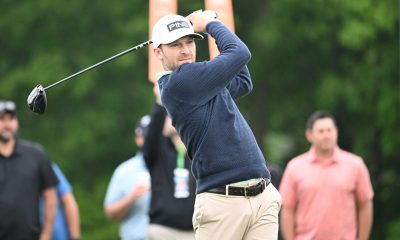

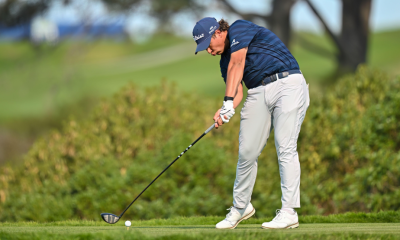

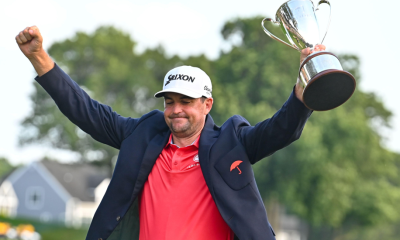

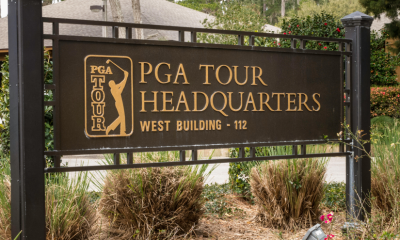

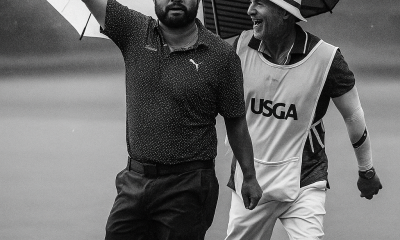

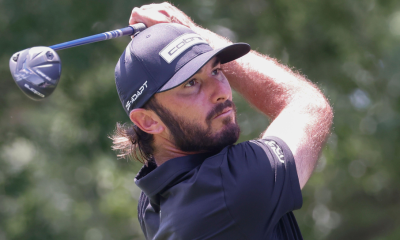









John R
Apr 20, 2013 at 10:14 am
Am I understanding correctly? You’re saying that he’s hitting the ball pretty well but when he does miss, he misses big and it’s the occasional big miss that’s costing him. Is that right? Is it possible to validate that with some sort of hole-by-hole scoring comparison? In other words, could we say that in 2012 his scorecard doesn’t have enough big numbers on it but in 2013, there are always a couple of holes that have more influence on the high score?
Richie Hunt
Apr 20, 2013 at 10:51 pm
John,
You have the right idea. Essentially, his bad shots off the tee are worse than last year.
Unfortunately, the Tour does not have track double bogeys or worse on their Web site. However, he was 27th in Bogey Avoidance last year…currently 93rd this year. He was 1st in Birdies last year, 7th this year. The bigger dropoff is obviously in the Bogeys.
Nick
Apr 18, 2013 at 3:00 pm
I think the analysis of Rory’s game is fascinating. That being said, the advice for the average player to fire for the flag is wrong. Pro level short game is so far and above that of the average player that the penalty they pay for a missed green is not even close to what your average weekend warrior plays. Hit a green, and your going to be in at probably two, three max. For plenty of amateurs, 4 strokes from the green side is not entirely uncommon, three is the most likely result. Obviously, the problem their is not firing at flags, its sub-standard short game but that’s what most amateurs are bringing to the table. Combine that with the fact that a pro’s dispersion with his irons is much smaller than an amateur, and I still think firing for center of green is the better play for those who aren’t playing off low/mid single digit handicaps or otherwise don’t have the game to go pin-seeking everytime and make it pay for them.
Richie Hunt
Apr 19, 2013 at 8:51 am
It depends on the difference in closer to the hole. While Tour players have very good short games, more amateurs would be better off with a 25 foot chip/pitch than a 50 foot putt. Now if it was a 25 foot shot from the bunker, that would be a different story. And he better amateurs tend to aim for the middle of the green way too often.
That’s why they can shoot the scores they do despite a Tour average of a little under 12 greens in regulation while averaging 1 birdie putt made from greater than 25 feet for every 98 holes played.
They are more capable of firing at a flag and if they miss…miss in the right spot and make for an easy up-and-down. If they don’t miss…they end up with a birdie putt that is close to the hole and give themselves a better chance of making the birdie.
From the amateur data I’ve collected, most amateurs aim at the flag unless there is a bunker or water hazard in the way. The closer to scratch amateurs tend to aim at the middle of the green more often and when they fire at flags…they do not account for where the best spot is located if they miss the green. It’s really the greatest example of poor strategy that kills rounds for good amateurs.
The best way I would explain it is that regardless of handicap, it should not be mandatory to have to hit 14+ GIR in order to shoot in the 60’s.
Ivan
Apr 18, 2013 at 2:34 am
And what if Rory was struggling simply because he has done some changes at his swing?
His hips seems less rotating during a driver swing …
Richie Hunt
Apr 18, 2013 at 10:35 am
The only difficulty I have with that Ivan is he’s hitting the ball just as far and hitting more fairways. It could very well be the issue rather than the new driver.
I don’t necessarily think it’s quite either. Rory is a fairly streaky player and he hits a gigantic draw off the tee. I think that plays into why he is streaky…when the ball is not drawing like it should he has difficulty playing for it. Take a player that hits a smaller draw if he starts drawing it more or less than normal, I don’t think it’s quite as big of a problem for them.
Jack
Apr 17, 2013 at 11:04 pm
I’m confused by that his GIR hasn’t dropped, but his distance from the edge of fairway has. Since the distance from edge is a contributing factor to the GIR, doesn’t that just mean his iron play has gotten better? And yet the end result hasn’t changed (getting it on the green), so why? It seems like to me it’s his short game. He’s regressed with less attempts in the 10-20 range. Plus when you add up the totals he gets 4.77 strokes played within 40 yards and 4.48 for 2012. If GIR remains steady, then the lower short game strokes would be beneficial as a cumulative measure. This is getting too involved. I’m just going to blame it on the driver.
Richie Hunt
Apr 18, 2013 at 10:32 am
Good points, Jack.
First, while he’s ranked 103rd in Avg. Distance From Edge of Fairway; that is actually a very good ranking for a golfer that hits it as far as he does. When he ranked 29th in 2012, that was downright outstanding for his length off the tee. Usually good drivers of the ball that are that long are around 150-165th in that metric. He’s also hitting more fairways and hitting his irons better.
I think it’s fairly simple to see that he’s hitting a lot of great shots on the course and that is allowing him to hit more greens. But, it’s the occasional big miss off the tee (and fairway bunkers) that is really killing his game right now. He didn’t have that last year and that’s why he dominated.
john
Apr 17, 2013 at 7:02 pm
he has only played less than 10 rounds… obviously his stats will look better. how about you write another article after the conclusion of the 2013 season? It doesn’t take rocket science to see rory’s struggle. you are just playing devil’s advocate saying all the analysis is wrong for saying he is playing bad..
Richie Hunt
Apr 17, 2013 at 10:39 pm
John,
I disagree with your point because I’m utilizing the rankings instead of pure numbers which makes the comparison more apples to apples.
I think it’s obvious that Rory is struggling as well as I inferred that in the title. I’m going into *why* he is struggling in spite of traditional metrics like GIR being better (ranking wise) this year.
And he’s hitting his new irons and putter better which was supposed to be a big part of his struggles. And he’s even doing some things with the driver better. He’s just hitting more of those occasional bad drives than he was last year and that is causing him to lose strokes whether it be off the tee or of the subsequent shots.
Morgan
Apr 17, 2013 at 5:57 pm
Fantastic article Rich, great read and very informative.
christian
Apr 17, 2013 at 11:31 am
Personally, I would always think it is a biggger issue changing drivers than irons. Especially blade irons, the blade rory plays is probably more or less exactly the same as his old one. With the same grind, look and probably even tha same steel. Starting to use a driver with a “cavity back” would seem to be a much bigger step, equipment wise. So, his driver (and also woods) is probably the issue.
Richie Hunt
Apr 17, 2013 at 8:35 am
Thanks Roger. I think if anything, Rory does not have far to go. The assumption that his game has fallen badly off because of the equipment is inaccurate at this point.
timmy
Apr 17, 2013 at 5:38 am
i think distance from the fairway edge is too subjective to be included in the calculation
it is very possible that the player intended to land the ball closer to the edge under certain circumstances.
Richie Hunt
Apr 17, 2013 at 9:41 am
It’s not as subjective in the terms you think of it as. It’s very telling of a player’s precision off the tee. That is in part what made Rory #2 in my Driving Effectiveness metric, he hits it super long and was an astouding 29th in Distance From Edge of Fairway.
All of the data I’ve collected thru ShotLink and Shot Tracker shows that the Tour players are always trying to find the fairway in some regard. The real difference is how much it really matters given the course. A course like Bay Hill…hitting fairways and having a close Distance from the Edge of the Fairway is fairly important to a player’s success. That’s because the rough is usually taller at Bay Hill. But a course like Redstone (Shell Houston Open) hitting fairways and having a close Distance from the Edge of the Fairway has never had statistical importance to a player’s success there. I’ve never been to Redstone, but my Tour clients tell me that the rough there provides virtually no consequences to hit out of.
So at a place like Redstone, hitting a 280 yard drive in the fairway will provide an advantage over hitting a 280 yard drive in the rough. It’s just that the advantage is smaller than if those drives were hit at a course like Bay Hill.
And there’s a correlation between distance from edge of fairway and ‘missed fairways – other.’ Strangely, that correlation doesn’t quite exist with fairway bunkers. That’s because the longer hitters who are less precise can often blast it well over the fairway bunkers. But for Rory, that has not been the case this year.
Roger Faithfull
Apr 17, 2013 at 3:39 am
Rich,
Thanks for a hugely detailed analysis on Rory’s game.
So all he has to do is add a 910D3 in a Covert Cover into the Bag.
I’m a great Rory fan. I wish him well for the balance of 2013.
I seem to recall he did a Huge come back in 2012…………….
Regards, Roger in New Zealand..just below Australia !
Eric
Apr 17, 2013 at 7:40 am
Great summary but I would want to know are you comparing the statistics from all of 2012 versus the first 3+ months of 2013 or are you comparing the first 3 months of play for both 2012 and 2013? It would be interesting to see how these statistics stack up at the end of the year versus the entire previous year. Anything that shuts Johnny Miller up is a bonus from my point of view. Now…..how can the average Joe track this stuff 🙂
Richie Hunt
Apr 17, 2013 at 9:34 am
I’m just comparing the first 3 months versus the entire 2012 season. That’s why I used rankings instead of the actual numbers to help make it more ‘apples to apples.’
It is also another reason why I thought the short game shots around the green data wasn’t enough to cause the dip in his play. Instead, we see dramatic differences in his drives that go into fairway bunkers and drives that are ‘missed fairway – other’ which is any shot that is not in the fairway, rough or fairway bunker (i.e. trees, hazards, O.B., etc).
I am currently collecting data that will be able to track specific data for each tournament. I plan to use that soon.